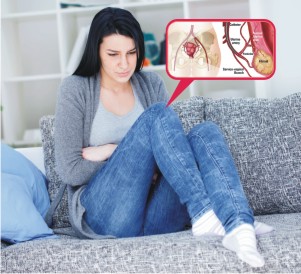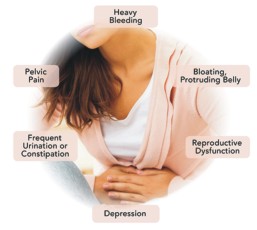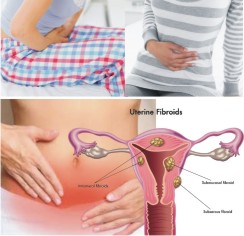Quick Links
Uterine Fibroids
Treatment for fibroids without surgery

Uterine Fibroids
Uterine fibroids are very common non-cancerous (benign) growths that develop in the muscular wall of the uterus. They can range in size from very tiny (few centimeters) to larger than an apple. Occasionally, they can cause the uterus to grow to the size of a five-month pregnancy. In most cases, there is more than one fibroid in the uterus. While fibroids do not always cause symptoms, their size and location can lead to problems for some women, including pain and heavy bleeding.
Uterine fibroids are the most common tumors of the female genital tract. Fibroid tumors of the uterus are very common, but for most women, they either do not cause symptoms or cause only minor symptoms.
20 to 40 percent of women age 35 and older have uterine fibroids of a significant size. Uterine fibroids are the most frequent indication for hysterectomy in premenopausal women and, therefore, are a major public health issue.
Uterine Fibroid Symptoms

Nonsurgical Uterine Fibroid Embolization

Uterine Fibroid Embolization (UFE), also known as uterine artery embolization, is performed by an interventional radiologist, who is trained to perform such minimally invasive procedures. This procedure does not require general anesthesia.
The interventional radiologist makes a tiny nick in the skin in the groin and inserts a catheter into the femoral artery. Using real-time imaging, the physician guides the catheter through the artery and then releases tiny particles, the size of grains of sand, into the uterine arteries that supply blood to the fibroid tumor. This blocks the blood flow to the fibroid tumor and causes it to shrink and die.
UFE Recovery Time

Fibroid embolization usually requires a hospital stay of one night. Pain-killing medications and drugs that control swelling typically are prescribed following the procedure to treat cramping and pain. Many women resume light activities in a few hours time and majority of women are able to resume normal activities with in a few days.
UFE Efficacy

Effect on Fertility
There have been numerous reports of pregnancies following uterine fibroid embolization
Risks
UFE is a very safe method and, like other minimally invasive procedures, has significant advantages over conventional open surgery. However, there are some associated risks, as there are with any medical procedure. A small number of patients have experienced infection, which usually can be controlled by antibiotics. There also is a less than one percent chance of injury to the uterus, potentially leading to a hysterectomy. These complication rates are lower than those of hysterectomy and myomectomy.
Thanks to non-surgical uterine fibroid embolization procedure thousands of women worldwide are cured of fibroid related pain, heavy bleeding and other related symptoms and are leading normal healthy life.
